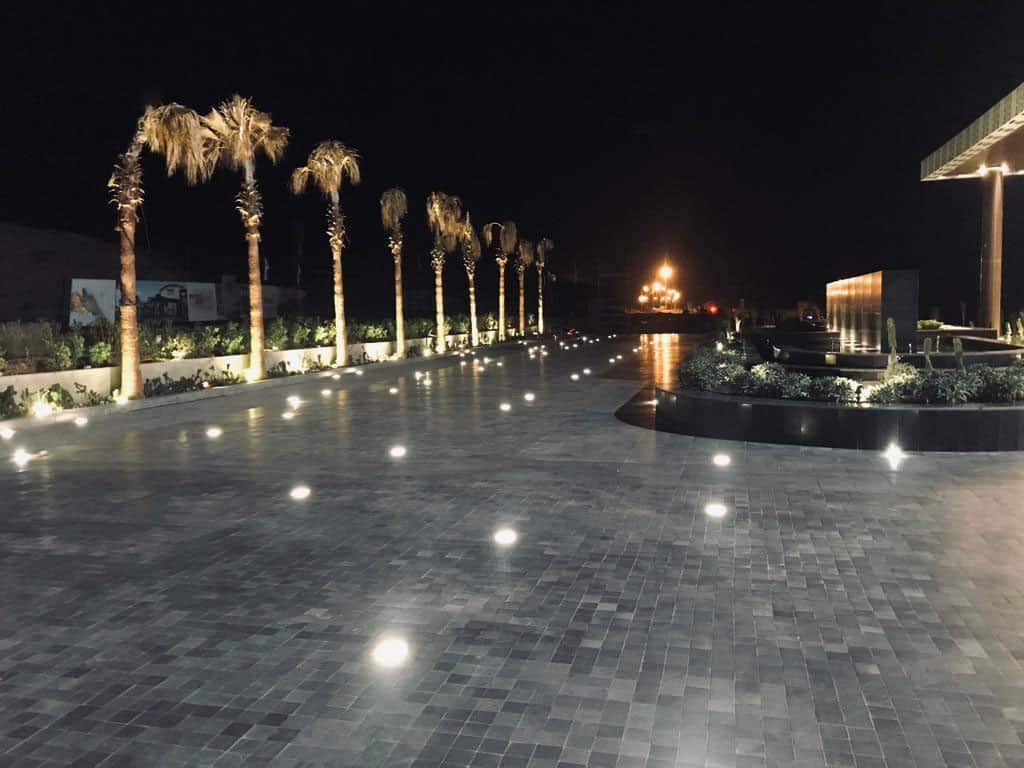Are you considering carrying out an outdoor lighting project for natural environments? Before starting, let’s think not only about the project, but also about the repercussions of our decisions.
A few weeks ago all the alarm bells went off in different groups and sectors, from environmental defenders to lighting designers, many of them included in the APDI (Spanish Professional Association of Lighting Designers), an association linked to JISO through our technical promotion manager, Javier Navarro.
Last May, the Madrid City Council presented the “Madrid Río se ilumina” project (“Madrid Río lights up”), a pilot project that aims to illuminate a 560-metre section of the Manzanares riverbed, a section adjacent to dam 6, between the Oblique bridge and the Andorra footbridge, in the Arganzuela and La Latina districts.
In the words of those responsible for this pilot project, they define and justify the action as follows:
“This work to be carried out in Madrid Río will provide this section with ornamental lighting to create an environment that enhances its natural landscape and walkways beyond daylight hours. The civil works will begin at the end of June, the project deadline is eight months and the budget is around 950,000 euros.
The light projected from the banks of the river will make the area more attractive, highlighting its architecture, its green heritage and offering a friendly and safer nightlife experience for residents and visitors. The project will be carried out in a way that is compatible with the naturalisation criteria of the urban section of the Manzanares, without reducing the areas with consolidated plant species or those in which there is an incipient development of species that will become established in the coming years.
A total of 61 spotlights will be installed, including 57 spotlights along the aforementioned section and four more powerful spotlights at the dam to highlight the central building. The installation is scalable to accommodate future extensions”.
An open letter sent by the APDI to the Madrid City Council tries to make them reflect on the damage and harm that this pilot project could cause to the natural environment and to citizens.
“There are many experiences and recommendations that show how light pollution isn’t avoided simply by stopping the emission of light towards the upper hemisphere and numerous studies point out the dangers of light pollution in rivers caused by incorrect artificial lighting in their surroundings (bridges, walkways and riverbanks). Furthermore, in this case the aim is to project light directly onto the riverbed, which will certainly have a negative effect on the species that have been repopulating it in recent years. Natural life requires day and night cycles, a number of hours of darkness during which some animals (and plants) rest, but other species carry out most of their activity. Therefore, no light, however dim or nuanced, can be considered respectful of the river’s natural environment.
All this scientific evidence is prompting new international recommendations, norms and urban planning standards that include limitations on the use of artificial light in natural or renaturalised environments. We cannot forget the UN report and recommendations contained in its document “Dark and Quiet Skies for Science and Society”, and, in 2018, the Spanish Lighting Committee published a document written by scientists from the Spanish Network for Light Pollution Studies in which the Administration is urged to take into consideration the risks of artificial light in areas populated by nocturnal and diurnal wildlife”.
Many studies and scientific evidence show that artificial lighting directly harms both nocturnal and diurnal wildlife.
“Every year, light pollution causes the death of millions of birds. Many migratory birds, such as ducks, geese, wagtails and all kinds of songbirds, as well as seabirds, especially those that migrate at night, are particularly exposed to increased light pollution”. (UN Chronicle)
A recent study published in the journal Iluminet spoke directly about how outdoor lighting on bridges over riverbeds affected marine wildlife:
“Measurements show that bridges can induce various types of unnatural lighting scenarios that can deteriorate or fragment aquatic habitats after dark. Furthermore, the conceptual model presented demonstrates how typical bridge lighting conditions can induce different behavioural responses in migratory fish.
The results of this study highlight the need for further studies on the impact of ALAN (artificial light at night) on freshwater systems, as well as more detailed assessments of light environments in aquatic habitats”. (Iluminet)
In summary, and using the same words used by APDI colleagues; “The most efficient installation is not always the most sustainable. In natural environments, the most suitable light should be no light”.


